
Entrepreneurs' Organization promotes entrepreneurship in community and from a holistic...
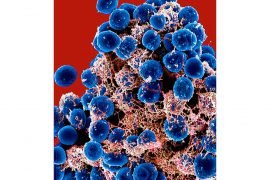
We are beginning to take in that it is possible...

The Earth from space, those other corners of the universe,...

The Catalan seed company invoices 64% of turnover through exports,...

Take a deep breath. Alright? We are going to talk...

The German city of Freiburg has become an example of...

China has emerged as a global axis, to the point...

Since the Walkman we have walked from one place to...
There are many Inuit legends about the northern lights. Westerners,...

The first session of the cycle on the regatta organized...

Música clásica sobre la arena de la playa en dos...

The first session of the cycle on the regatta organized...

The hospital's managing director, Manel del Castillo, and the pharmaceutical...

Generalitat y Ayuntamiento impulsarán dos equipamientos de 'Casa de les...

Leticia Beleta, director of Alexion Pharmaceuticals in Spain and Portugal,...
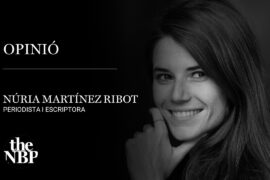
We all have a friend who never leaves the Gràcia...

Barcelona director opts for Best International Film with 'La sociedad...
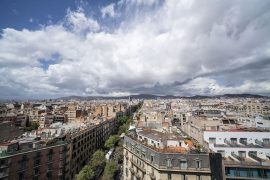
The hotel and industrial sectors softened the market's decline last...
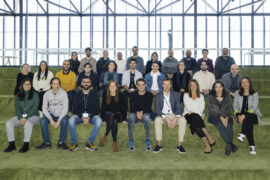
The technology company, with a workforce of 35 employees and...
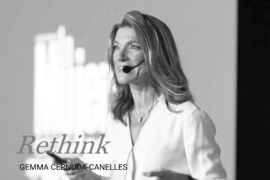
“The women of yesteryear were strong and had to fight...
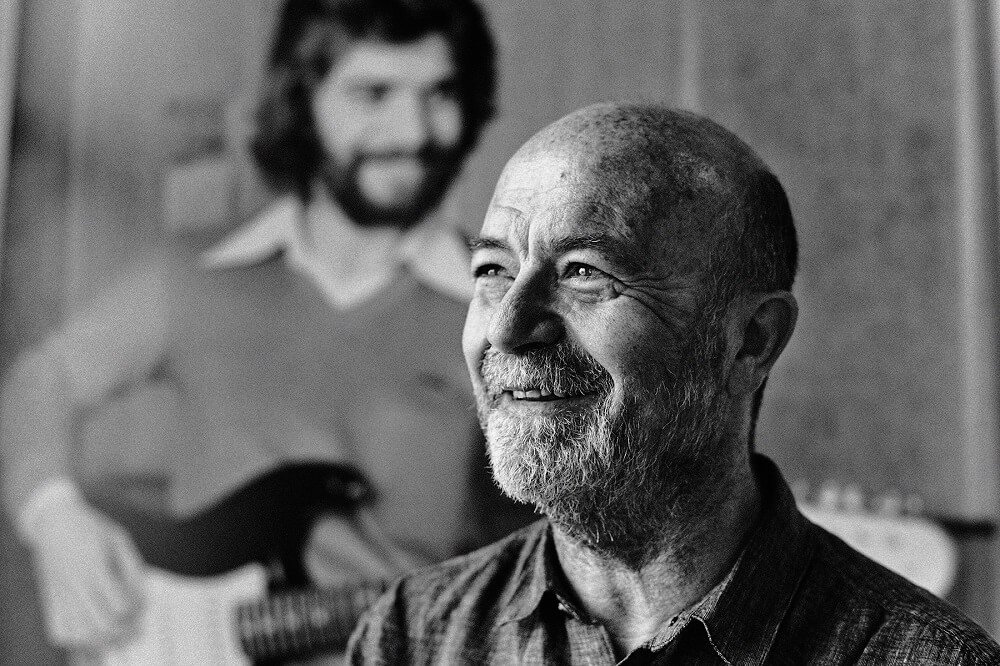
– What is the crown jewel in the programme this year?
– The show Al este del cante, with cantaor Arcángel and Les Noves Veus Bulgares (May 23, Sala BARTS). The Taller is co-producing it, and after its premiere in Barcelona, there will be four or five more dates elsewhere in Spain. It is very special for us because to a certain extent we are commemorating Enrique Morente’s concert with Les Veus Bulgares in Barcelona’s Cathedral square almost twenty years ago, for the Mercè festivities in 1998.
– The festival began at the Taller de Musics’ JazzSí club in Carrer Requesens, but over the last quarter century it has changed venue and even its name…
– That’s right. It started off as the Ciutat Vella Flamenco Festival at JazzSí, where besides our great ally Morente, we had Juan Habichuela, Esperanza Fernández, Mayte Martín, Miguel Poveda. Then we went to Plaça dels Àngels, but in the open air it was mayhem. That was until the CCCB Centre for Contemporary Culture of Barcelona hosted us, where all the greats of the time took part: El Lebrijano, Chocolate, Paquera de Jerez, Agujetas… In 2012 we moved to the Mercat de les Flors and it was when we adopted the name Ciutat Flamenco. Flamenco with an O (it is flamenc in Catalan), because we believe that is how it should be: we don’t say tang for tango or boler for bolero, do we? We were at the Mercat until last year. In this edition, we are spreading across the city, with nine different venues, from the Palau de la Música to the Auditorium in Sant Martí.
– What kind of an audience does the festival have?
– Middle-upper class, the kind of people who are erudite, with cultural interests, that you would find at jazz concerts, at the theatre… It has always been like that. If you bring artists like Chicuelo or La Tana to places like the Civic Centre in Trinitat Vella—a predominantly Andalusian working-class district—you will have a working class audience, but the fact is that getting the public from the metropolitan area into the city centre is hard. That is why this year we have tried to decentralise. I think that festivals that receive public support owe it to the city, and that is why we wanted to bring concerts closer to more diverse social classes.
– Catalonia is flamenco dancer and singer Carmen Amaya’s country, and has always had a lively flamenco scene. However, it is true that in the late eighties and early nineties, the music achieved a more powerful public projection than earlier…
– Certainly, and this was mainly thanks to the figure of Mayte Martín. But it did not sprout like a mushroom, huh? If you talk to Mayte, I’m sure she will tell you that one of the references is Faraón, a bailaor dancer here who was also very knowledgeable of the songs and the guitar-playing of the previous generation, little known by the general public. In the period from 1965 to 1985 there was a whole generation of artists who have been lost, although many of them did not get to become professionals. I’m talking about cantaores like Diego Garrido, Jiménez Rejano—who could have become a professional but died young—or El Nene de Graná, who no one could beat singing seguiriyas, a deep, expressive style of jondo flamenco. They were people who had come to live in Catalonia from small villages in Andalusia. There was also Chiqui de la Línea, who would give flamenco singing lessons at the Taller and the ESMUC College of Music, and who has been decisive in generating a whole generation of novices that now includes Rosalía, Paula Domínguez, Mariola Membrives, Pere Martínez…
– But this revival of the prestige of flamenco we mentioned earlier, can we also talk about a change of mindset by the public?
– That too, of course. For a long time, a part of Catalan society rejected flamenco because they saw it as something foreign. It was thought that it was music, dance and a song imposed by the Franco regime. Which is absurd because, among other things, flamenco comes from long before the Franco regime, mind! That began to lose meaning in the eighties, on the one hand because there is a generation that no longer carries this burden of the Civil War, and on the other because there are people like Faustino Núñez, José Luis Ortiz Nuevo or José Manuel Gamboa who begin to study flamenco from a different perspective, and they build a view unrelated to the National-Catholic ideology of the Franco dictatorship…
– So, can we consider this distrust is dead and buried?
– To a great extent, but not completely. There is a part of our society that will always reject it, but now it is no longer a political issue, nor because Franco pursued the Catalan language. It’s just because there is a part of Catalan society that is listless, that does not get excited over anything… and flamenco is so passionate!

– What is the crown jewel in the programme this year?
– The show Al este del cante, with cantaor Arcángel and Les Noves Veus Bulgares (May 23, Sala BARTS). The Taller is co-producing it, and after its premiere in Barcelona, there will be four or five more dates elsewhere in Spain. It is very special for us because to a certain extent we are commemorating Enrique Morente’s concert with Les Veus Bulgares in Barcelona’s Cathedral square almost twenty years ago, for the Mercè festivities in 1998.
– The festival began at the Taller de Musics’ JazzSí club in Carrer Requesens, but over the last quarter century it has changed venue and even its name…
– That’s right. It started off as the Ciutat Vella Flamenco Festival at JazzSí, where besides our great ally Morente, we had Juan Habichuela, Esperanza Fernández, Mayte Martín, Miguel Poveda. Then we went to Plaça dels Àngels, but in the open air it was mayhem. That was until the CCCB Centre for Contemporary Culture of Barcelona hosted us, where all the greats of the time took part: El Lebrijano, Chocolate, Paquera de Jerez, Agujetas… In 2012 we moved to the Mercat de les Flors and it was when we adopted the name Ciutat Flamenco. Flamenco with an O (it is flamenc in Catalan), because we believe that is how it should be: we don’t say tang for tango or boler for bolero, do we? We were at the Mercat until last year. In this edition, we are spreading across the city, with nine different venues, from the Palau de la Música to the Auditorium in Sant Martí.
– What kind of an audience does the festival have?
– Middle-upper class, the kind of people who are erudite, with cultural interests, that you would find at jazz concerts, at the theatre… It has always been like that. If you bring artists like Chicuelo or La Tana to places like the Civic Centre in Trinitat Vella—a predominantly Andalusian working-class district—you will have a working class audience, but the fact is that getting the public from the metropolitan area into the city centre is hard. That is why this year we have tried to decentralise. I think that festivals that receive public support owe it to the city, and that is why we wanted to bring concerts closer to more diverse social classes.
– Catalonia is flamenco dancer and singer Carmen Amaya’s country, and has always had a lively flamenco scene. However, it is true that in the late eighties and early nineties, the music achieved a more powerful public projection than earlier…
– Certainly, and this was mainly thanks to the figure of Mayte Martín. But it did not sprout like a mushroom, huh? If you talk to Mayte, I’m sure she will tell you that one of the references is Faraón, a bailaor dancer here who was also very knowledgeable of the songs and the guitar-playing of the previous generation, little known by the general public. In the period from 1965 to 1985 there was a whole generation of artists who have been lost, although many of them did not get to become professionals. I’m talking about cantaores like Diego Garrido, Jiménez Rejano—who could have become a professional but died young—or El Nene de Graná, who no one could beat singing seguiriyas, a deep, expressive style of jondo flamenco. They were people who had come to live in Catalonia from small villages in Andalusia. There was also Chiqui de la Línea, who would give flamenco singing lessons at the Taller and the ESMUC College of Music, and who has been decisive in generating a whole generation of novices that now includes Rosalía, Paula Domínguez, Mariola Membrives, Pere Martínez…
– But this revival of the prestige of flamenco we mentioned earlier, can we also talk about a change of mindset by the public?
– That too, of course. For a long time, a part of Catalan society rejected flamenco because they saw it as something foreign. It was thought that it was music, dance and a song imposed by the Franco regime. Which is absurd because, among other things, flamenco comes from long before the Franco regime, mind! That began to lose meaning in the eighties, on the one hand because there is a generation that no longer carries this burden of the Civil War, and on the other because there are people like Faustino Núñez, José Luis Ortiz Nuevo or José Manuel Gamboa who begin to study flamenco from a different perspective, and they build a view unrelated to the National-Catholic ideology of the Franco dictatorship…
– So, can we consider this distrust is dead and buried?
– To a great extent, but not completely. There is a part of our society that will always reject it, but now it is no longer a political issue, nor because Franco pursued the Catalan language. It’s just because there is a part of Catalan society that is listless, that does not get excited over anything… and flamenco is so passionate!
